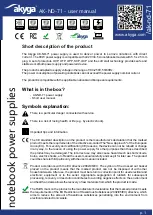
11.8 Domino Web Access
The following recommendations help optimize your Domino Web Access environment:
1. Refer to the redbooks listed at the beginning of this chapter. The redbook, “iNotes Web Access
on the IBM eServer iSeries server,” contains performance information on Domino Web Access
including the impact of running with SSL.
2. Use the default number of 40 HTTP threads. However, if you find that the
Domino.Threads.Active.Peak
is equal to
Domino.Threads.Total
, HTTP requests may be waiting
or the HTTP server to make an active thread idle before handling the request. If this is the case
for your environment, increase the number of active threads until
Domino.Threads.Active.Peak
is
less than
Domino.Threads.Total
. Remember that if the number of threads is set very large, CPU
utilization will increase. Therefore, the number of threads should not exceed the peak by very
much.
3. Enable
Run Web Agents Concurrently
on the Internet Protocols HTTP tab in the Server
Document.
4. For optimal messaging throughput, enable two MAIL.BOX files. Keep in mind that MAIL.BOX
files grow as a messages queue and this can potentially impact disk I/O operations. Therefore, we
recommend that you monitor MAIL.BOX statistics such as
Mail.Waiting
and
Mail.Maximum.Deliver.Time
. If either or both statistics increase over time, you should increase
the number of active MAIL.BOX files and continue to monitor the statistics.
11.9 Domino Subsystem Tuning
The objects needed for making subsystem changes to Domino are located in library QUSRNOTES and
have the same name as the subsystem that the Domino servers run in. The objects you can change are:
y
Class (timeslice, priority, etc.)
y
Subsystem description (pool configuration)
y
Job queue (max active)
y
Job description
The system supplied defaults for these objects should enable Domino to run with optimal performance.
However, if you want to ensure a specific server has better response time than another server, you could
configure that server in its own partition and change the priority for that subsystem (change the class),
and could also run that server in its own private pool (change the subsystem description).
You can create a class for each task in a Domino server. You would do this if, for example, you wanted
mail serving (SERVER task) to run at a higher priority than mail routing (ROUTER task). To enable this
level of priority setting, you need to do the following:
1. Create the classes that you want your Domino tasks to use.
2. Modify the following IFS file ‘/QIBM/USERDATA/LOTUS/NOTES/DOMINO_CLASSES’. In
that file, you can associate a class with a task within a given server.
3. Refer to the release notes in READAS4.NSF for details.
IBM i 6.1 Performance Capabilities Reference - January/April/October 2008
©
Copyright IBM Corp. 2008
Chapter 11 - Domino
167
















































